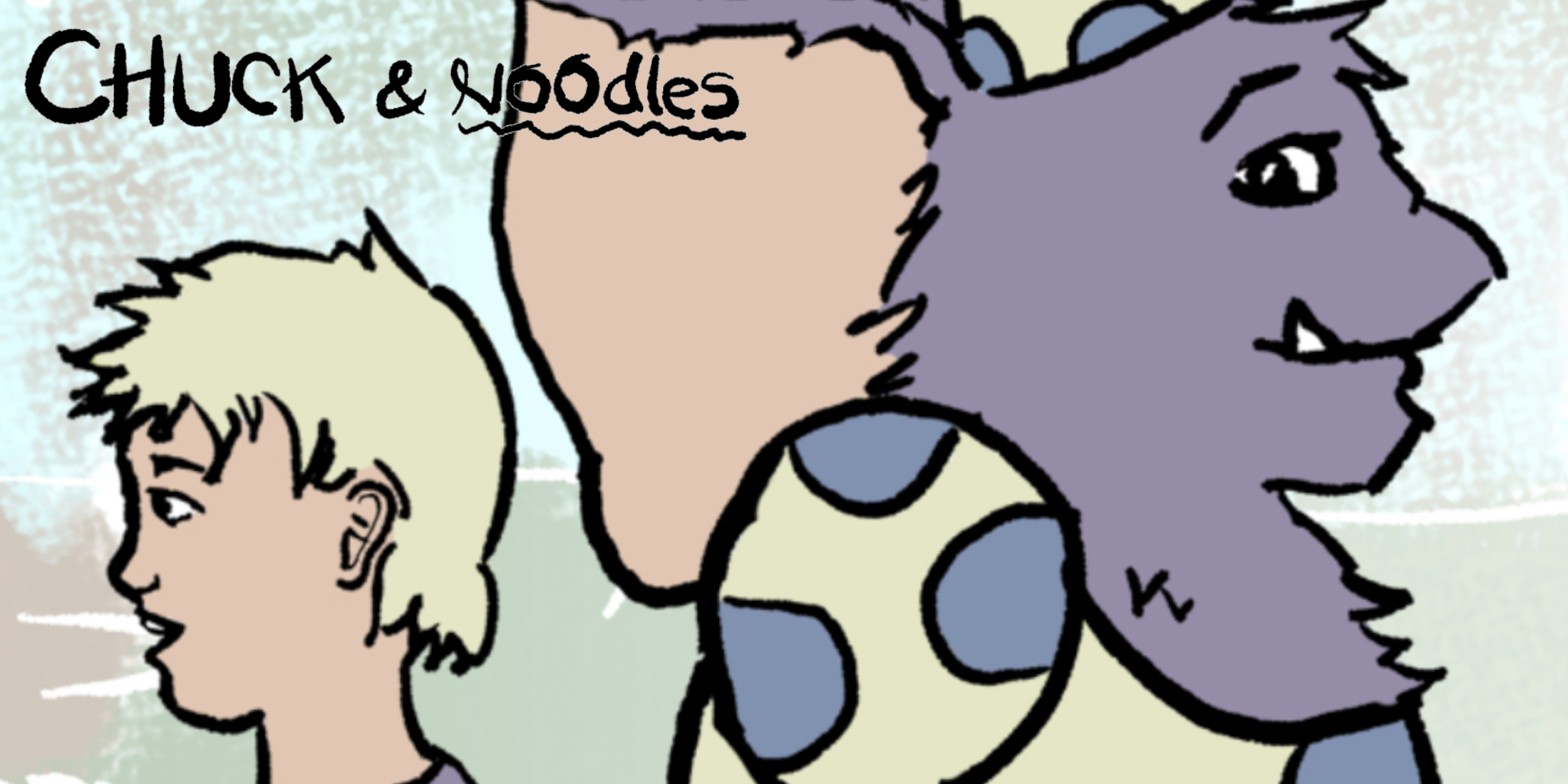A small change can have massive knock-on effects. Nowhere is this truer than in the performing arts, as there are hundreds of examples of a single performance taking an okay idea and turning it into a genre and era-defining piece. This is also true of TTRPGs because a small detail or mechanic can transform a game and dramatically elevate its impact.
Chuck & Noodles is a fantastic example of this because, thanks to the addition of a few thematic but straightforward elements, it becomes one of the most emotionally impactful 2-player TTRPGs I’ve played in the last year.
The Sad End Of An Invisible Friend

Created by Kurt Refling and Kathleen Hartin, the game casts the players as Chuck and Noodles. Chuck is an average young boy preparing to celebrate his tenth birthday tomorrow, an exciting but nerve-wracking milestone as it brings many changes, including a new school. Noodles is Chuck’s invisible friend, one who has stood by his side during the ups and downs of early childhood, but as Chuck grows up, he drifts further and further away from his old pal.
The game’s core mechanics are simple. Both players have a list of topics to talk about as they play. Chuck’s prompts focus on the world around him, the things he likes, and the things giving him anxiety. Similarly, Noodles gets prompts focused on the surrounding world and Chuck’s interests. However, rather than his final set being about anxiety, they are about Noodles attempting to help Chuck deal with the things that are bothering him.
Sadness Lurking Under The Surface
A quick glance at the prompts will make the underlying story of Chuck & Noodles instantly clear. Chuck’s prompts are clearly based on a tween’s mindset with questions that make the player think about sports, video games, and anxiety about the upcoming school year. However, Noodles’ prompts are focused on more childish things, clearly showing how Noodles and Chuck are slowly drifting apart as the boy ages.
The prompts also point the player toward other issues in Chuck’s life, hinting towards a recent parental divorce and a grandmother showing early signs of illness. These twists of realistic darkness give hooks for the players to build on during the game, making the characters feel like dynamic, three-dimensional people. This is no mean feat, considering each character only gets a few short paragraphs.
Even better, these prompts provide concrete guidance without making the player feel railroaded, meaning players new to performance-based TTRPGs and LARPs won’t feel overwhelmed by decision paralysis while allowing more confident or experienced players to put their own twists on the characters, making each playthrough a unique experience.
Harmonious Writing And Mechanics Lead To A Wonderfully Sad TTRPG

Chuck & Noodles’ unique setup enhances this expert prompt writing and scene setting. Rather than having the players talk to one another across a table, Chuck & Noodles has the players communicate via a pair of walkie-talkies or two-way radios. And, rather than having the players remain static throughout the game, players are told to begin the game standing back to back and to slowly walk forward as the game continues, with the story concluding when the other player’s words become unintelligible due to you exceeding the walkie-talkies’ range.
The movement and props combine with the prompts to perfectly capture the feeling of slowly but inevitably drifting away from something or someone, feeling your bond slowly decay as your communication goes from natural to strained to non-existent despite your best attempts at stopping it. The walking only makes this feeling more intense, as you can slowly hear the sounds made by the other player getting quieter and quieter as they move away, making their voice feel like a memory that’s gradually fading away. Plus, the physical act of walking makes the improv flow better by simultaneously helping you focus on the moment and by giving you another action to do that stops you from getting lost in your own head, resulting in a much more stream-of-consciousness conversation, which totally suits the story the game is trying to tell.
A Sad TTRPG That Only Gets More Tearjerking During Play
Chuck & Noodles is a game that’s hard to do justice through words on a page. While you’ll be able to tell that the game is well-written and intelligently designed during a read-through, during play, all of these individual elements come together to create something that’s way more than a sum of its parts.
The average game of Chuck & Noodles feels like opening a barely healed wound you didn’t know you had, leading to you experiencing emotions you didn’t realize you were capable of. Even better, this emotional response doesn’t ever feel forced because the game’s semi-narrative writing style means that the game gently guides players towards the right headspace and helps them understand the themes at play without outright stating them, making the resulting experience feel much more natural.
Because of this, Chuck & Noodles is a must-play game for anyone interested in the intersection between TTRPG, LARP, and Performance Art, as it’s the perfect microcosm of how the genres overlap and how designers can enhance their work by drawing inspiration from all three mediums. Even if you’re not interested in this, Chuck & Noodles is still a must play for anyone interested in experiencing a memorably sad TTRPG that will stick with you long after the radios fade to static.


